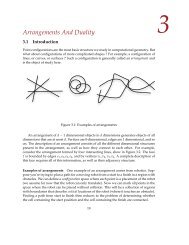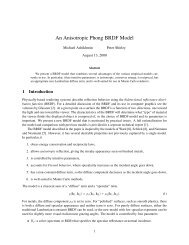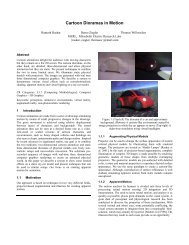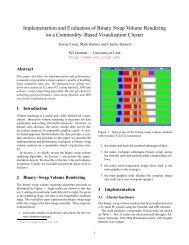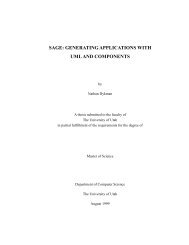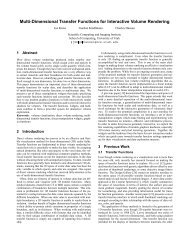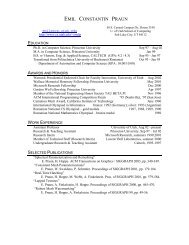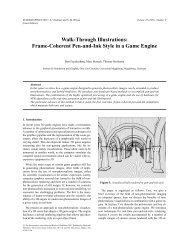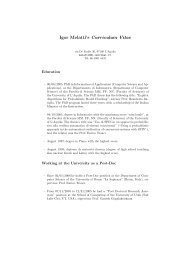CAGD II – COURSE PROJECT
CAGD II – COURSE PROJECT
CAGD II – COURSE PROJECT
Create successful ePaper yourself
Turn your PDF publications into a flip-book with our unique Google optimized e-Paper software.
Computing the Local basis system:<br />
Computing ∂suv ( , )/ ∂u:<br />
For every column j, the control points of the surface<br />
corresponding to the partial derivative with respect to u are computed as<br />
( Pi + 1, j−Pi, j)<br />
udeg<br />
(uk[i+udeg+1]-uk[i+1])<br />
Computing ∂suv<br />
( , ) / ∂v:<br />
For every row i, the control points of the surface corresponding<br />
to the partial derivative with respect to u are computed as<br />
( Pi, j + 1 − Pi, j)<br />
vdeg<br />
(vk[j+vdeg+1]-vk[j+1])<br />
Where udeg is the degree in the u direction, vdeg the degree in the v direction, uk the u<br />
knot vector and vk the v knot vector.<br />
The knot vector of the new spline surface (partial derivative) is similar to the original<br />
knot vector, it is uniform floating with two fewer elements compared to the original.<br />
When we want to move a particular control point, the node value in the parameter space<br />
corresponding to that control point is taken <strong>–</strong> say this is (u,v)<br />
The normal is computed as n= ∂suv ( , ) / ∂ ux<br />
∂suv ( , ) / ∂ v<br />
The local basis chosen is ∂suv ( , ) / ∂ u,<br />
∂suv ( , ) / ∂ ux<br />
n, n. The amount of motion in each<br />
of these directions is specified by the user using sliders in the GUI.




